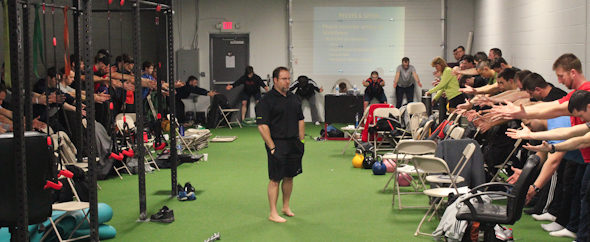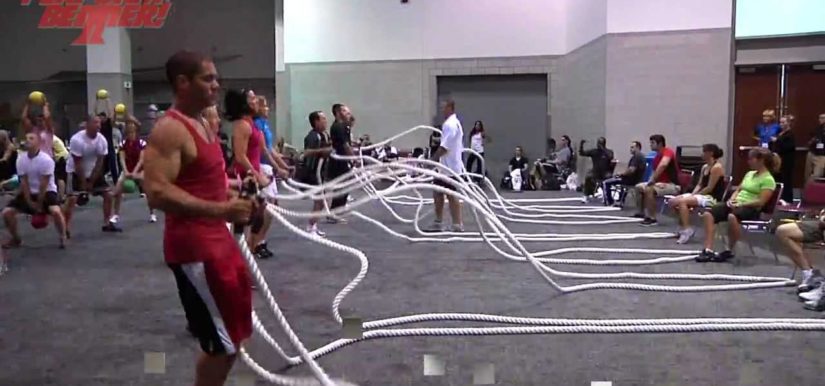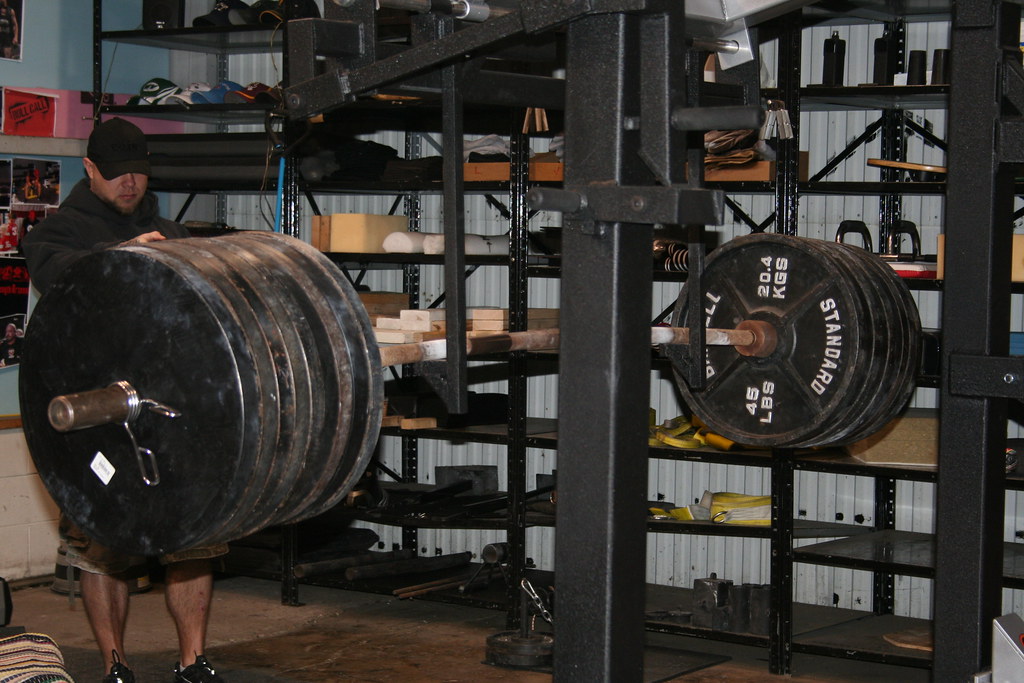Today’s guest post comes courtesy of Andrew Millett – a good friend of mine and brilliant physical therapist outside of Boston.
The term “bridging the gap” is always brought up when the discussion of physical therapy and strength and conditioning comes up. There’s no doubt a melding of the two when discussing the most successful outcomes for patients and athletes. However, in a day and age where more and more personal trainers are taking it upon themselves to play the role of “therapist” (and vice versa), it’s important to note that, while it behooves us to dip our toes in both ponds, there IS a distinction between the two.
And we need to respect that.
Enjoy.
Bridging the Gap Between Physical Therapy and Strength and Conditioning
In the fields of strength and conditioning, human performance, physical therapy, etc., we interact with people on a daily basis. We learn about their family, their job, their goals, and what they want to get out of their training or rehab. The majority of the people in this field did not get into their respective field for the money.
I am not saying that any of these fields can’t be lucrative. The majority of us share a common bond: the desire to help people.
Whether you are a physical therapist trying to help someone get rid of their pain and get back to doing what they want to be doing or a personal trainer trying to help someone lose some weight, most of us want to help people.
When we see a client who is in pain or has some type of movement dysfunction, most of us want to help them get out of pain, whether or not we are a healthcare practitioner. Personal trainers, strength and conditioning coaches, etc. are well-qualified to assess and correct movement.
There are many schools of thought such as the Functional Movement Screen (FMS), Selective Functional Movement Assessment (SFMA), and Functional Range Conditioning (FRC) – to name a few – that teach trainers and coaches how to assess movement so that they can make their programming more effective based off of how their client presents on their assessment.
More often than not, a strength coach or trainer will see a movement fault they would like to fix in order to optimize their client’s training in order for their client’s to succeed. There is nothing wrong with wanting more for your client and for your client to achieve their goals. When assessing a client, if some type of movement limitation is present (I.e., decreased joint mobility and range of motion), then by all means, use the tools in your toolbox to attempt to correct it.
Tools such as a foam roller, lacrosse ball, or other self-myofascial release device, can be beneficial in attempting to increase soft tissue flexibility that could be limiting a client’s movement pattern.
Self-myofascial release can be very effective for improving movement quality and at reducing pain. By doing something such as this, you are doing your due diligence in trying to help your client to the best of your abilities.
If you use an implement suggested above and someone moves or feels better, GREAT!
If someone doesn’t move or feel any better after something like that, then as Charlie Weingroff has said,
“4th and 10, you have to punt.”

As he described in his DVD, Training = Rehab, if you have a client who has some type of mobility limitation and they aren’t improving, “punt” them, not literally, to another provider…I.e., physical therapist, sports chiropractor, or a massage therapist.
If someone has pain, punt! Per the Functional Movement Screen (FMS), if someone presents with pain, the test is over and they should be referred to a healthcare practitioner.
Now, if you referred all of your clients who are in pain to another healthcare practitioner, you would probably have a lot of free time on your hands.
Most clients have some type of ache or pain they are dealing with.
By “punting” them, this does not mean you have to get rid of them. You can use a multi-disciplinary approach and continue to train them without worsening their pain or dysfunction while they are treated for whatever ails them.
Don’t try to be a jack of all trades and a master of none. Don’t try to be the strength coach or personal trainer who trains their clients, but also attempts to treat their pain or soft tissue dysfunction by performing some form of manual therapy.
This is where you need to know what you are good at and what someone else may be able to do better. If a patient or client presents to me and I know another practitioner that is better at it than me, they are definitely going to continue their care with that better clinician.
Keep the manual therapy to the physical therapists, sports chiropractors, etc. These clinicians have hours upon hours of training on various manual therapy techniques to assist in improving movement, pain, and dysfunction.
By meeting with local PTs and chiropractors in your area and developing a network of providers you can refer to, you should have no problem sending a client to a colleague who can help improve their current state. Your client will think the world of you for having the humility to refer them out to someone who can help them properly.
Even if the physical therapist helps decrease their pain, that client will always remember that you had their best interests at heart and you were thinking of them first.
Think of your client’s needs first, not your ego!
Now, just because I am a physical therapist, doesn’t mean I am not going to “bash” on personal trainers and strength coaches. I have a background in physical therapy and strength and conditioning. I consider myself a hybrid physical therapist, bridging the gap between rehab and strength training.
I know that I am not the smartest trainer or coach out there. I have the confidence in my skill-set to start the programming process and teach and help clients squat, deadlift, lunge, carry, push/pull, etc.
There eventually comes a time where I can have a personal trainer or strength coach take over and continue the process. My goal for my clients when they leave me is that they have some type of basic foundation of the various movements just mentioned so they can effectively and safely progress towards their health and fitness goals.
If you are a physical therapist, sports chiropractor, etc. and you either do not have the confidence in how to teach basic movements and program them OR you have not educated yourself on how to program and teach basic movements, then leave that to the strength and conditioning or personal training professionals.
The message goes both ways: as much as we encourage personal trainers not to be too “bridge gappy,” the same goes for physical therapists.
The major point of this post is not to bash either side of the health and performance spectrum. The point is that we need to coexist and develop connections with various healthcare and performance disciplines so that we are in the position to help the most important person in this process: the client or patient.
About the Author

Andrew Millett is a Metro-West (Boston) based physical therapist
Facebook: From The Ground Up
Twitter: @andrewmillettpt




.jpg)









